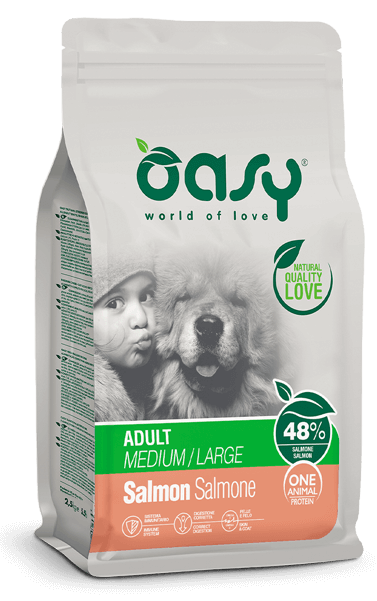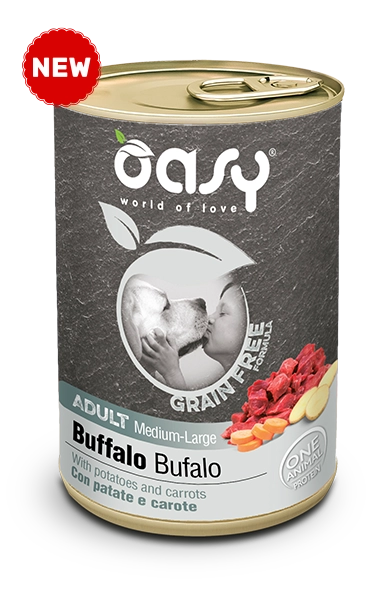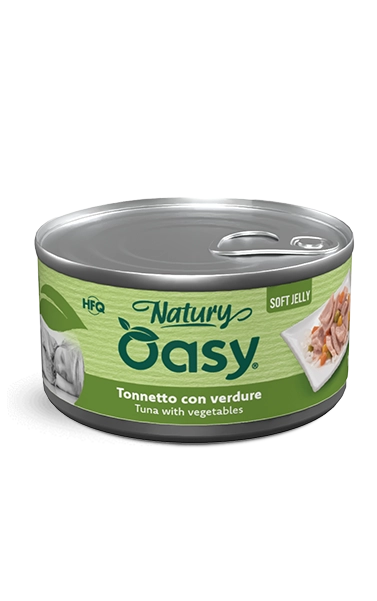Find out how to manage the correct doses in mixed feeding, alternating wet and dry food. A guide for balanced meals, appropriate for the real needs of your dog.
Mixed feeding is a choice made by many owners who want to take care of their four-legged friends.
Mixing dry and wet food in their daily nutrition is not just a matter of taste: it can also contribute to
meal’s palatability,
promote hydration and help
to control their weight, especially if this choice is made correctly and judiciously.
Yes,
mixing two types of food can really bring many benefits, but it also requires a little bit of attention. To ensure complete and balanced nutrition it is important to
know the difference between complete and complementary food and
to learn to manage the correct proportion according to the dog’s need.
In this guide we will see how we can do this in the right way.
Complete and complementary food: what does this mean?
Before getting into the details of
rations and
how to manage dog’s mixed feeding at best, let’s take a step back and understand the
different types of
food for dogs. In general, we can identify two main categories that have very different nutritional functions:
- Complete food: this alone provides all the nutrients that dogs need every day. It can be wet or dry, and it is formulated to meet energy and nutritional requirements according to size, age and lifestyle. Examples include our Oasy One Animal Protein kibble range and One Animal Protein Paté.
- Complementary food: this must be coupled with complete food, because it does not include all the necessary nutrients in appropriate quantities. They often include wet products (like Natury Soft Jelly) or snacks.
Food types according to moisture content
Besides the distinction between
complete and complementary food, it is useful to know that
dog food is also classified according to
its water content, that is their
moisture level.
This division is not related to the food’s nutritional completeness: there are both complete and complementary wet products (like snacks).
Let’s take a closer look at the main types:
- Dry: contains less than 14% of moisture. Kibbles, for instance, are the most common product. They are practical, last for a long time and help maintain good dental hygiene. Some snacks (like dogs’ biscuits) can be included in this category as well.
- Semimoist: it contains between 14% and 34% of moisture. This category usually includes some types of snacks. Our semimoist natural snacks for dogs are a good example.
- Wet: contains more than 34% moisture. This includes patés, meat chunks, bites or strips. They are very palatable and easy to digest, as well as providing a useful contribution to daily hydration.
Understanding
this distinction is
also useful to calculate the precise quantity of food to serve, since the water content can influence both the caloric intake and the feeling of satiety.
What mixed feeding means
Mixed feeding means
combining dry and wet food in dog’s daily diet. If carefully managed, it represents a valid solution
to feed your dog in a complete and varied way, offering
different textures,
increasing hydration and
caring about the emotional aspect of their meals, which is an essential part of your daily relationship.
It can be a useful choice for many reasons:
- Promotes hydration: wet food contains more than 70% water, and this mostly supports dogs that tend to drink too little.
- Improving the feeling of satiety: a balanced combination of wet and dry food can help prolonging feeling of fullness, helping the dog to feel full for longer.
- Increasing the palatability of meals: adding wet food to their diets, that dogs often enjoy both for its texture and smell, can stimulate the appetite even for the most demanding dogs.
There are two different ways to serve the two types of food:
- Separetely: for example, by offering them wet and dry food at different times of day. This is a good way to appreciate the different textures at best and can be useful for dogs that prefer well defined routines or that tend to be selective with food.
- Mixed in the same bowl to create a richer and more stimulating meal. This can increase palatability and curiosity of the dog, making it more rewarding from a sensory point of view.
Like any choice related to health, this too must be made consciously, considering the
real needs of our dog. The secret is
measuring correctly, according to the dog’s energy requirement,
choosing quality food and being able to
listen to our dogs: their signals, their appetite, their energy.
Benefits of dry food
Dry food, like
Oasy kibbles, is
formulated to be complete,
balanced and highly preservable. It is easy to measure and to manage in your daily routine, both at home and when travelling.
Moreover,
because of its crunchy texture,
it promotes chewing and dental hygiene.
From a nutritional point of view,
kibbles provide an optimal energy intake in small quantities and can therefore be adapted to the needs of a puppy, adult or senior dog, depending on the formula chosen.
If you want to know what their different needs are, take a look at our guides to the
puppy,
adult, and
senior dog’s nutrition.
Benefits of wet food
Wet food is highly appreciated by dogs because of its
high palatability. It can be in
small bites,
strips or
paté, and is often chosen because it stimulates the appetite of particularly demanding dogs, or dogs with less appetite.
Its
high water content (over 70%) contributes significantly to their hydration, especially when they tend to drink little. It is also useful for dogs with kidney, digestive or urinary problems as it helps intestinal transit and helps to maintain a good water balance.
However, you must be careful about the product you choose. In this case as well it is important to select a food that is appropriate to age, size and dog’s particular needs.
Oasy’s wet range offers a wide variety of
formulas created for balanced and complete nutrition, being particularly careful to
naturality of the ingredients. The ranges also include
single protein formulas, ideal for food sensitivities, and the
Grain Free Formula range, with just one source of animal protein and with no gluten or cereals, to offer maximum digestibility.
Calculating doses in mixed feeding
The most important aspect of mixed feeding is managing doses.
Determining the
daily caloric requirement of your dog is the first step: it can be estimated by consulting the ration table indicated in the food pack, or, more precisely, with the help of your veterinary. In any case,
a common mistake is to add up the two recommended portions of dry and wet food, doubling the caloric intake. The dog’s nutritional requirement remains the same and should be
distributed between the two kinds of food.
In general,
dry food can be considered
the basis of dog’s diet. Consequently,
you can consider dividing proportions such as 75% dry and 25% wet, or a more balanced split, such as
50% and 50%.
Proportions can vary according to the dog’s size, physical activity, season and potential specific needs. In this case as well it is important
to read the nutritional table or
to consult the vet in case of doubts.
Practical advice for a balanced mixed diet
Managing mixed feeding in a correct way means also paying attention to the daily gestures that over time can really make a difference for the dog’s wellbeing. Besides choosing the right products, you should also consider daily habits, the eating environment and the ability to avoid common mistakes, like knowing
which foods dogs shouldn’t eat.
Mealtime, for many dogs, has also an emotional value. Finding out
how to make the dog happy during this moment can strengthen your bond and improve their approach to nutrition.
What else? Here are some good tips to follow in your
daily management of mixed feeding:
- Always make sure your dog has clean and fresh water, especially if they eat a high quantity of dry food.
- Divide the daily portion into 2 or more meals each day, to help digestion and intestinal regularity.
- Make sure you use wet food within 48 hours from opening, keeping it in the fridge.
- Adapting diet to the individual needs of your dog, that can change based on age, size, season and lifestyle.
Let’s always remember this: each dog has different preferences and necessities. Observing their behaviour, listening to their signals and adapting nutrition is the best way to take care of them every day, with balance and awareness.


